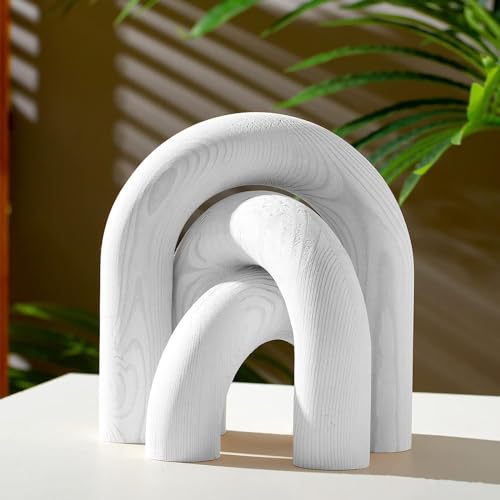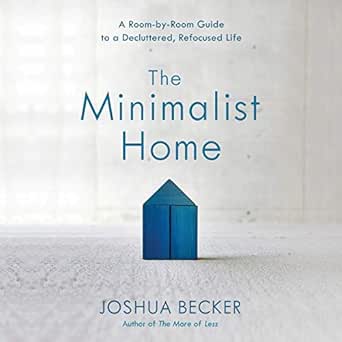Understanding Minimalism in Interior Design
Minimalism in interior design is a style that focuses on simplicity and functionality, emerging as a response to the excesses of previous design trends. The roots of minimalism can be traced back to the mid-20th century, influenced by art movements like minimal art and the architectural works of figures such as Ludwig Mies vander Rohe. Emphasizing the idea that “less is more,” minimalism encourages the removal of unnecessary elements to allow space and light to prevail.
At its core, minimalism advocates for a de-cluttered environment where every piece has a purpose. This principle is particularly important in designing a living room, where a tranquil and inviting atmosphere is desired. By prioritizing functional furniture with clean lines, minimalism helps create an open and airy space that feels harmonious. The emphasis on simplicity extends to color palettes as well, often featuring neutral tones that contribute to a calming ambiance.
One of the key principles of minimalist interior design is the concept of negative space. Through the strategic arrangement of furniture and decor, minimalist design allows for areas that are intentionally left empty, creating a sense of balance and serenity. This quality not only accentuates essential elements but also evokes a feeling of calmness, making it easier for residents to relax in their living room.
Moreover, minimalism promotes sustainability by encouraging individuals to invest in high-quality, timeless pieces rather than a multitude of lower-quality items. This approach fosters an appreciation for craftsmanship and longevity, which aligns perfectly with the minimalist ethos. In summary, understanding minimalism in interior design reveals its capacity to create tranquil environments through simplicity, functionality, and a profound sense of aesthetic appeal.
Key Elements of a Minimalist Living Room
Creating a minimalist living room involves selecting key elements that foster an atmosphere of calm and simplicity. To begin, a neutral color palette is fundamental in establishing the desired aesthetic. Shades such as whites, grays, and beiges allow for a serene backdrop, while providing the perfect canvas for the intentional arrangement of furniture and accessories. These colors reflect natural light, which is crucial in a minimalist design, encouraging an open and airy feel throughout the space.
The choice of furniture is another cornerstone of minimalist living room design. Prioritize multi-functional pieces that maximize utility while minimizing clutter. For example, a sleek coffee table can double as a storage unit, or a modular sofa can adapt to various layouts. It is essential to opt for furniture with clean lines and simple forms, avoiding ornate details that may detract from the minimalist ethos. Each piece should serve a purpose, as this not only reduces visual noise but also enhances the overall functionality of the room.
In addition to color and furniture, texture plays a significant role in enriching the living room while maintaining minimalism. Incorporators can select materials like wood, metal, and soft fabrics strategically to add depth without overwhelming the senses. A well-placed throw blanket or a couple of thoughtfully chosen cushions can introduce warmth and comfort, breaking the starkness that sometimes characterizes minimalist spaces.
Finally, embracing natural light is vital to achieving the minimalist goal. Large windows or strategically placed mirrors can enhance brightness and create an illusion of more space. Remember, a minimalist living room is about balance; therefore, allow open spaces to breathe and invite tranquility. Prioritizing these key elements will ensure that your living room embodies the essence of minimalism, promoting a lifestyle that values simplicity and intentionality.
Tips for Decluttering and Organizing Your Space
Embracing minimalism in your living room begins with an effective decluttering process. Start by evaluating your possessions, focusing on essential items that bring you joy or serve a practical purpose. A methodical approach can utilize the “Four-Box” technique: label boxes as “Keep,” “Donate,” “Sell,” and “Trash.” As you sort through your belongings, carefully consider each item’s significance to avoid unnecessary accumulation.
Once you have sorted your items, the next step involves organizing your living space to enhance flow and functionality. Position furniture to encourage movement and interaction while maintaining an airy ambiance. Choose multi-functional pieces, such as sofas with storage compartments or sleek nesting tables, which minimize clutter and maximize utility. Be mindful of the layout; arranging furniture in a way that promotes conversation can foster a cozy yet minimalist environment.
Storage solutions align closely with minimalist principles, offering practical ways to keep your space organized. Opt for discreet storage options like under-sofa bins, wall-mounted shelves, and sleek cabinets that blend seamlessly with your decor. The use of transparent storage containers promotes visibility while maintaining a clean aesthetic. Additionally, incorporating vertical storage helps utilize space efficiently, allowing for both organization and decoration without overwhelming the senses.
As you create a serene and uncluttered environment, it’s essential to establish a maintenance routine. Make it a habit to regularly assess and reorganize your belongings, preventing clutter from accumulating once more. By fostering a mindful relationship with your possessions, you reinforce the minimalist lifestyle, cultivating a living room that embodies simplicity and tranquility, while reflecting your personal style.
Incorporating Personal Touches into Minimalism
Minimalism in living room decoration focuses on simplicity and functionality while creating an inviting atmosphere. To personalize a minimalist living room, it is essential to select decor items that reflect one’s individuality without cluttering the space. A well-curated selection of art, plants, and meaningful decorative elements can help maintain the integrity of minimalist values while showcasing personal style.
One effective method to incorporate personal touches is through art. Selecting a few pieces that resonate with one’s tastes can serve as focal points in the room. Instead of displaying a large number of artworks, consider choosing a singular piece or a small gallery wall that includes a mix of framed art, photographs, or even a tapestry. This approach allows for personalization while also ensuring that the overall aesthetic remains uncluttered. The key is to select works that evoke emotion or symbolize personal experiences, serving as conversation starters without overwhelming the senses.
Plants are another popular choice for adding warmth and character to a minimalist living room. Incorporating greenery not only enhances the visual appeal but also contributes to a calming environment. Opt for a few strategically placed potted plants or hanging greenery. Choose varieties that thrive in the specific light conditions of the room, ensuring that they complement the surrounding decor. Plants can reflect individuality while adhering to minimalist principles, creating a lively and organic touch.
Lastly, consider including a few meaningful decor items, such as a unique vase, a handmade sculpture, or even family heirlooms. These elements tell a story and create an inviting atmosphere, reinforcing a sense of belonging without detracting from the minimalist aesthetic. When chosen wisely, personal touches in a minimalist living room can create a cozy yet stylish environment, achieving the perfect balance between simplicity and individuality.
















